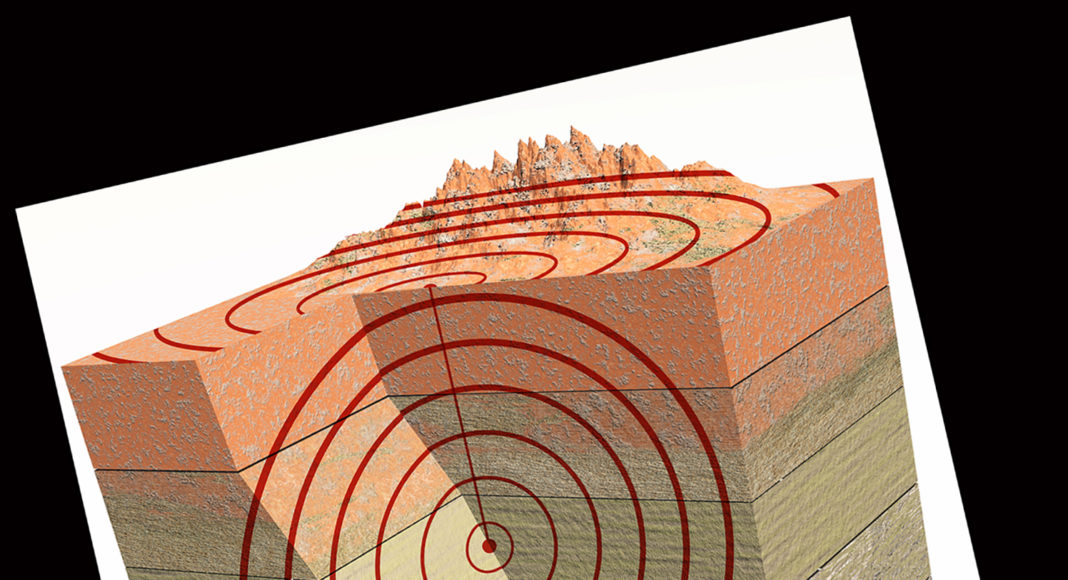
When Apple News forwarded a reported on a 2.3 magnitude earthquake near Moores Mill, Alabama, it was clear the cycle of online sensation that began with two sizable California shakes was pretty much down to its last aftershock.
But before the last bottle of beer’s put back on the grocery shelf, here’s an attempt to distill what you actually need to know about earthquakes and their effects. (I promise you will not see the word “temblor” here, now or ever.)
- The earth began quaking about a three billion years ago, when enough solid scum collected on its surface to start clumping and colliding.
- It will stop quaking when it has lost so much heat that its internal churning isn no longer powerful enough to move bits of the surface around: two/three billion years from now, about the same time the sun expands into a hot red fog and fries the inner planets.
- Hence we can’t “do anything” about earthquakes except predict them (iffy at best but improving) and prepare for them by avoiding development in known danger zones, enforcing strict earthquake-aware building codes, and keeping a survival kit for shaking days ahead.
- If you don’t play your role in the above program, you are definitely part of the problem, because when the emergency comes, people who don’t will be a dead weight on those who do. Nobody should be forced to watch their neighbors die just because they’re bone stupid. That’s really all you need to know, but a few other easy-to-master facts will assist you to rise above the pigeon-flap next time there’s an abandoned-mine collapse in Alabama.
- About the Richter scale . . . Mr. Richter came up with it nearly 90 years ago, when seismographs were about as accurate as a greengrocer’s scale. But after decades of gradual improvement it’s still surprising useful way of describing the destructive force of earthquakes.
- BUT only you take the trouble to learn what the number means: the single biggest shove the surrounding terrain gets during the whole unrolling of a quake. Richter numbers lie on a logarithmic scale set to the base 10: if a 1.0 quake were equivalent to a penny, a 2 would correspond to a dime, a 3 to a dollar, and so on up. A 10 is worth a million in that currency.
- BUT the shove above is in one direction: the energy released in that shove spreads out in three dimensions. This means that total energy released increases by a factor of 31 between Richter points. You do the math. (And if you’re up to that consider that the longer a quake continues, the more energy is released.)
- So back to what you need to know: quakes between .0 and 4+ don’t matter, except maybe to people standing right on top of them. The traditional rules of quake etiquette still apply: if you’re outside stay there; if you’re inside, stay away from windows, don’t get under a table (unless the table is designed to resist the roof falling on it), and head for a place with some reinforcement. They used to recommend a doorway; now they tell you to lie down alongside a wall. Maybe it is safer than a doorway; I would feel so exposed I’d be scared to try it.
- 5-6ers produce significant but manageable damage like broken gas-lines, electrical fires, disrupted communications. 7-8ers, even where strict building codes are strictly enforced, majorly threaten lives and property: collapsing bridges, highways turned to impassable rubble, trains derailed, cellular towers toppled. Don’t be surprised if the only communication for a few days is courtesy of neighbors with a generator and DirectV.
- 9+? Nellie, bar the door. Nobody knows: since Mr. Richter set up his scale, we’ve never had one.
